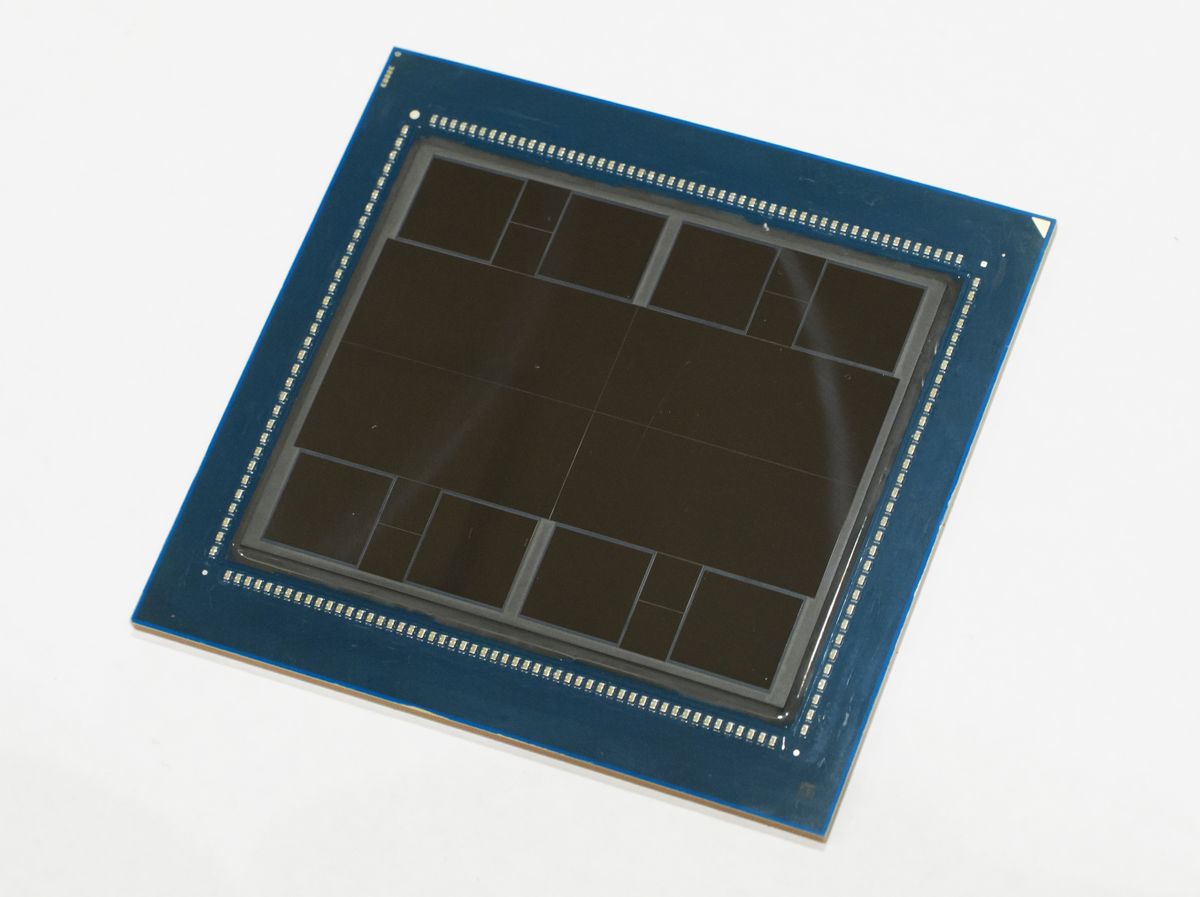The other instance of reuse was a bit chancier. When the MI300 team decided that a CPU/GPU combination was needed, Naffziger “somewhat sheepishly” asked the head of the team designing the Zen4 CCD for the
Genoa CPU if the CCD could be made to fit the MI300’s needs. That team was under pressure to meet an earlier deadline than expected, but a day later they responded. Naffziger was in luck; the Zen4 CCD had a small blank space in just the right spot to make the vertical connections to the MI300 I/O die and their associated circuitry without a disruption to the overall design.
Nevertheless, there was still some geometry that needed solving. To make all the internal communications work, the four I/O chiplets had to be facing each other on a particular edge. That meant making a mirror-image version of the chiplet. Because it was codesigned with the I/O chiplet, the XCD and its vertical connections were built to link up with both versions of the I/O. But there was no messing with the CCD, which they were lucky to have at all. So instead the I/O was designed with redundant connections, so that no matter which version of the chiplet it sat on, the CCD would connect.
The power grid, which has to deliver hundreds of amperes of current to the compute dies at the top of the stack, faced similar challenges because it too had to accommodate all the various chiplet orientations, Naffziger noted.


